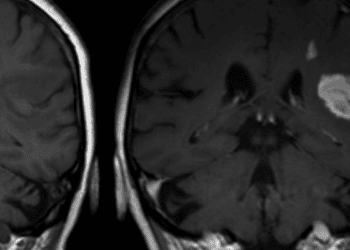High degree of local and regional variation in health care spending among Medicare patients
Image: PD
Key study points:
1. Substantial variation in medical spending exists both within (local variation) and between (regional variation) regional service areas.
2. A high degree of heterogeneity exists within regional areas such that high- or low-spending regions contained both low- and high-spending local service areas, respectively.
Primer: Geographic variation in health care spending is a well-documented health policy phenomenon, particularly in Medicare patients (1). The Dartmouth Atlas of Health Care, which combines over 20 years’ worth of Medicare data, divides this spending variation by service area: regional hospital referral regions (HRRs) within which exist locally based hospital service areas (HSAs). HRRs were originally characterized as areas where patients were referred for major cardiovascular surgery or neurosurgery. HSAs are characterized as the local markets that provide patients with the majority of their care when hospitalized (2). There are 306 HRRs in the United States, within which 3,436 HSAs exist.
Because research shows that higher spending does not equate to better care (3), policymakers aim to reduce unnecessary spending by minimizing geographic variation. Traditionally, attempts to minimize geographic variation have defined spending targets at the regional (HRR) level. However, determining how to control costs at the regional level (e.g. estimating value) continue to be complicated by factors such as variable costs of living (4). Further, whether regional level spending serves as an accurate marker of local spending within a region remains unknown.
The present study examines geographic variation in Medicare drug and nondrug spending at both the regional and local levels to examine whether regional spending adequately captures local spending trends to inform policy decisions.
Background reading:
- The Congressional Budget Office’s report on “Geographic Variation in Health Care Spending”
- The Dartmouth Atlas of Health Care: Data by Region
- The Implications of Regional Variations in Medicare Spending. Part 2: Health Outcomes and Satisfaction with Care
- Data Fuel Regional Fight on Medicare Spending
This [secondary data analysis] study examined data from a random 5% of Medicare beneficiaries who accessed services between 2006 and 2009. Statistical analysis was used to explore variation in HSAs and HRRs, and to evaluate the homogeneity of spending levels of HSAs grouped within a given HRR.
More variation in drug and nondrug spending was found within HRRs than between HRRs (59% vs. 41% and 57% vs. 43%, respectively). This variation was further underscored by findings that a relatively high proportion of high-spending HSAs were found in low-spending HRRs, and the same for low-spending HSAs in high-spending HRRs.
However, it remains unclear whether the degree of local variation seen in the Medicare population generalizes to non-Medicare populations, or whether incorporating patient preferences into the statistical models used here would affect these results.
In sum: When developing policies to address geographic disparities in health care utilization and spending in the Medicare population, attention should be paid to within-region variation as well as between-region variation.
Click to read the study in The New England Journal of Medicine
By [CH] and [LH]
© 2012 2minutemedicine.com. All rights reserved. No works may be reproduced without written consent from 2minutemedicine.com. DISCLAIMER: Posts are not medical advice and are not intended as such. Please see a healthcare professional if you seek medical advice.




